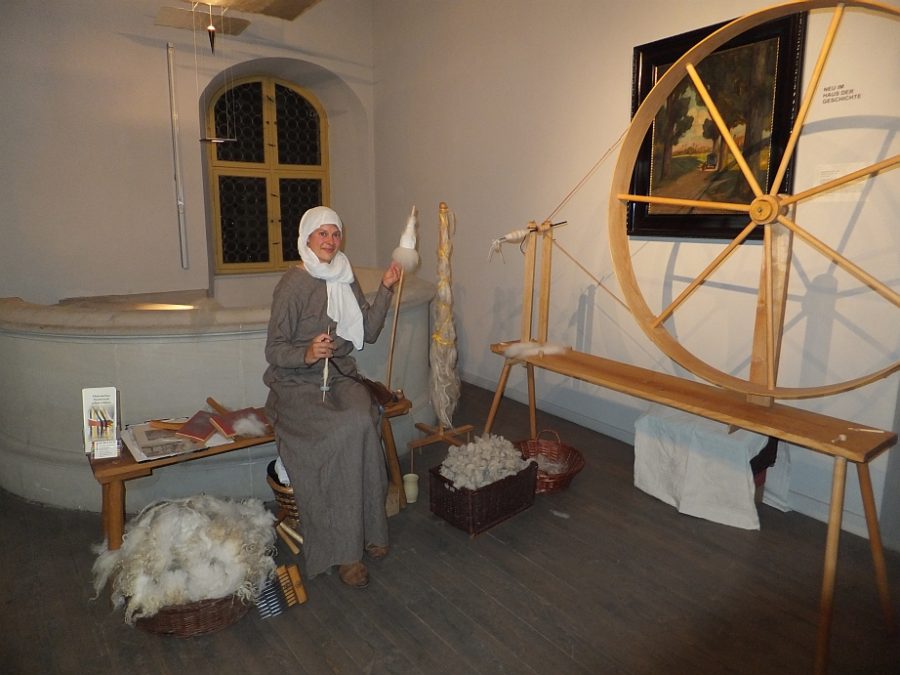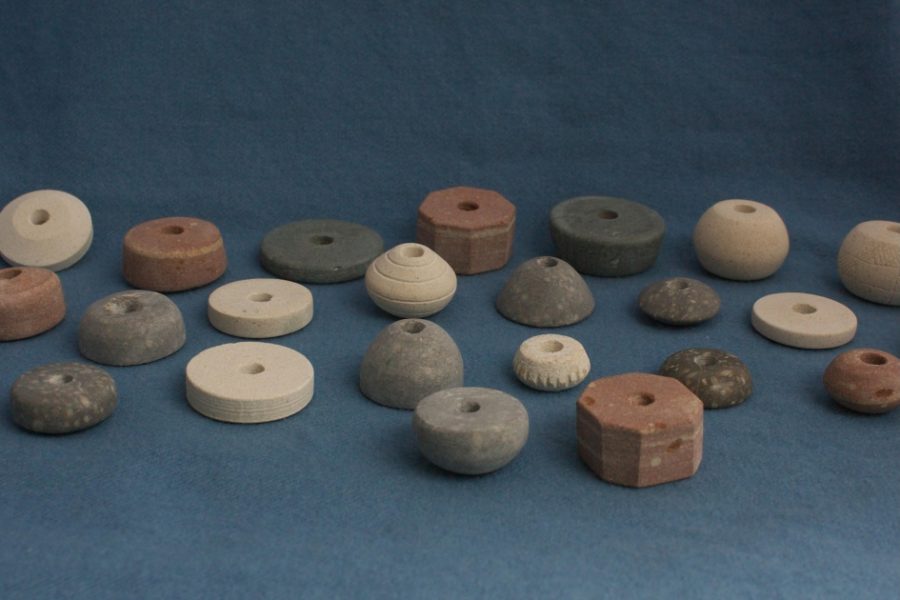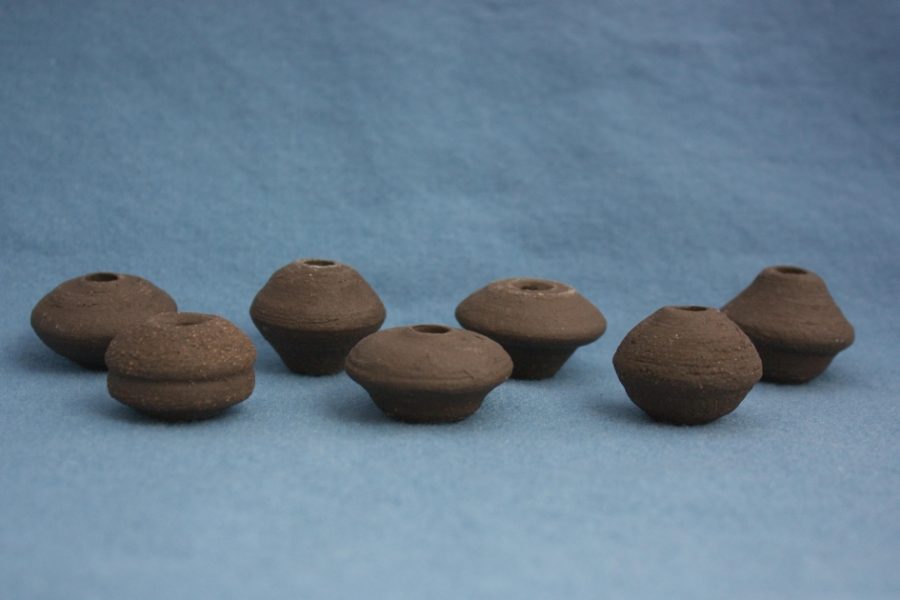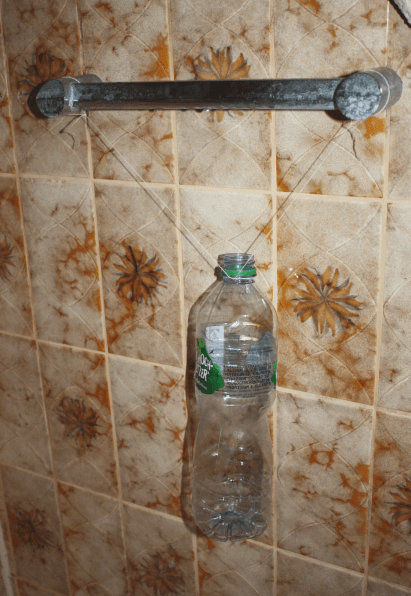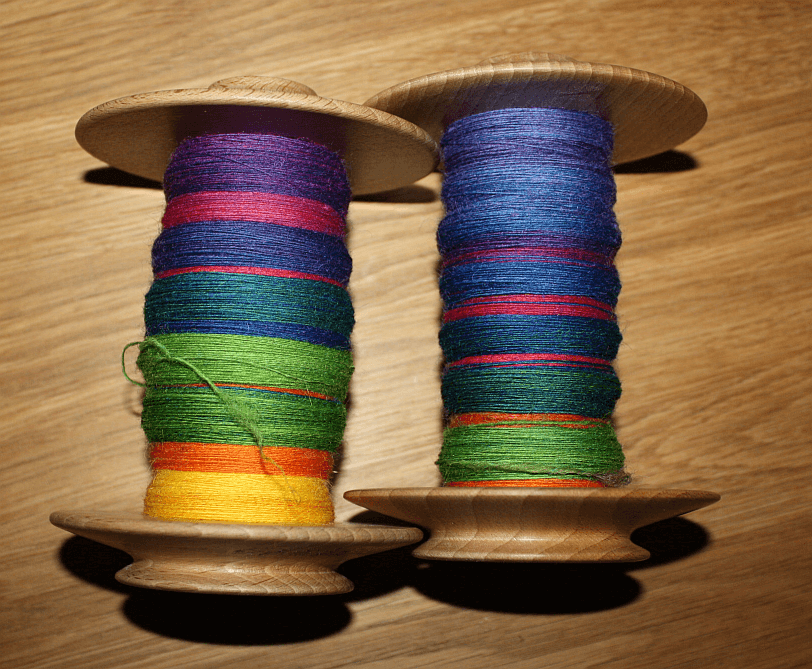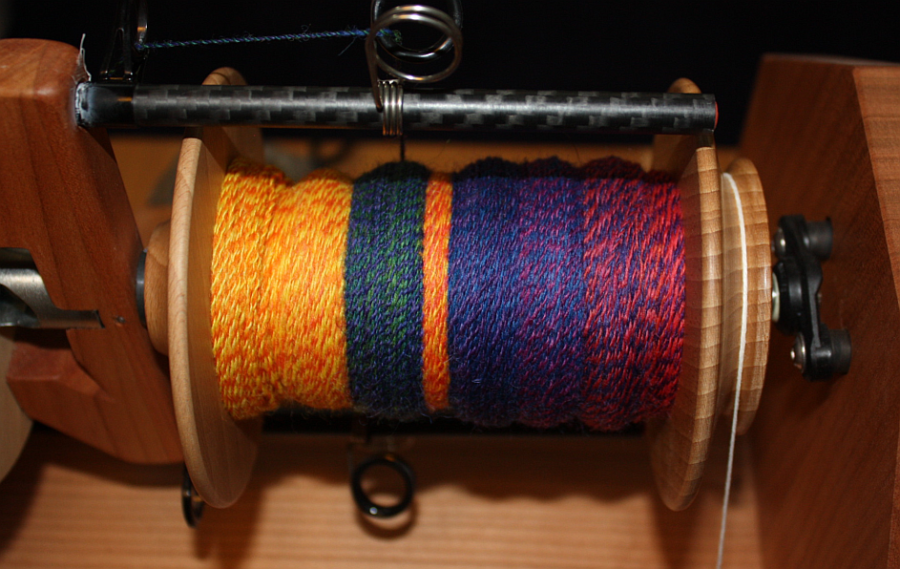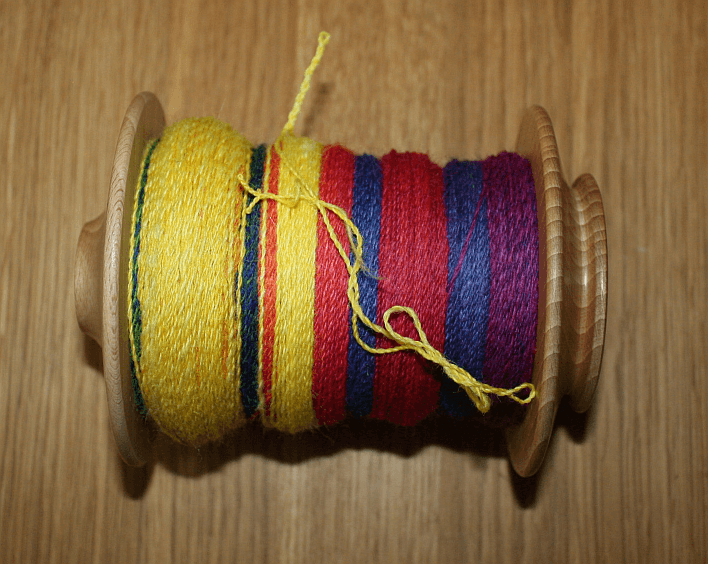My spinning for the experiment at the Textile Forum is done - and here's the result:
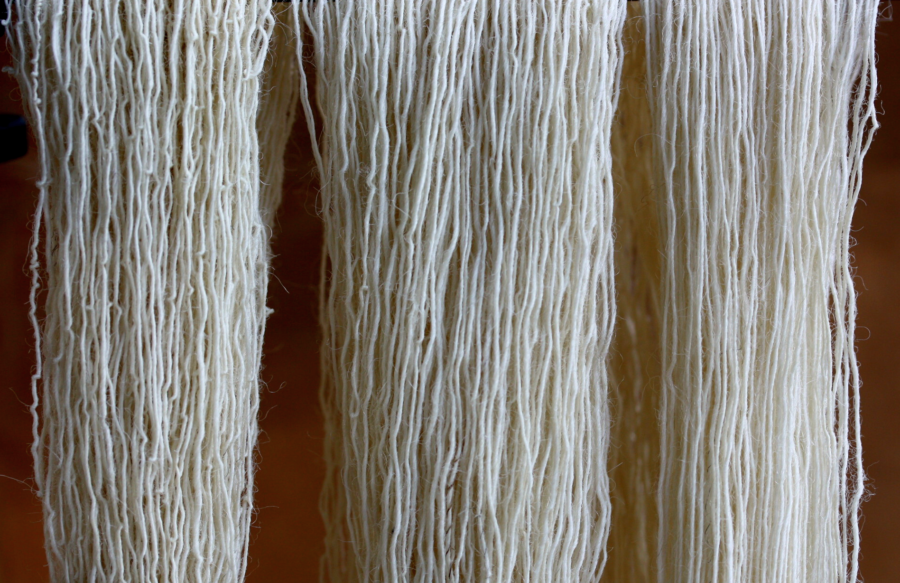
Three skeins, each with 230+ metres of yarn. Each from the same wool (Eider wool, I love that stuff, it really spins up beautifully), each in the same thickness of 0.5 mm, give or take a smidgen (even the evenest handspinning is not completely even!) and each finished in the same way (placed into a bowl, boiling hot water poured on top, left for 10 minutes to soak, then stretched out, then hung to dry with 1418 g of weight tied to the bottom end of the skein).
The only difference is the amount of twist between these three. The skein on the left has a spinning angle of about 45°, the one in the middle about 30°, and the one on the right about 20° - give or take a smidgen...
As you can see in the close-ups, the angle does make quite a difference. You can also see that it is not all the same everywhere in the threads, even though I always try to spin really, really evenly and really, really neatly.
[caption id="attachment_2718" align="aligncenter" width="196"]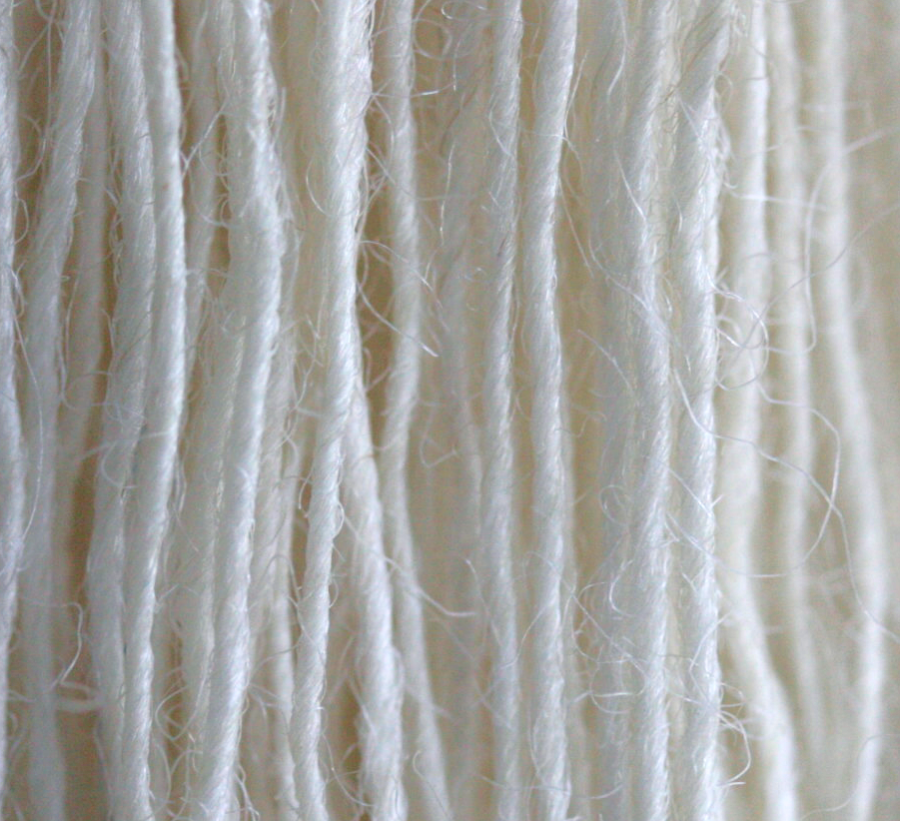 20° spinning angle
20° spinning angle
[caption id="attachment_2719" align="aligncenter" width="206"]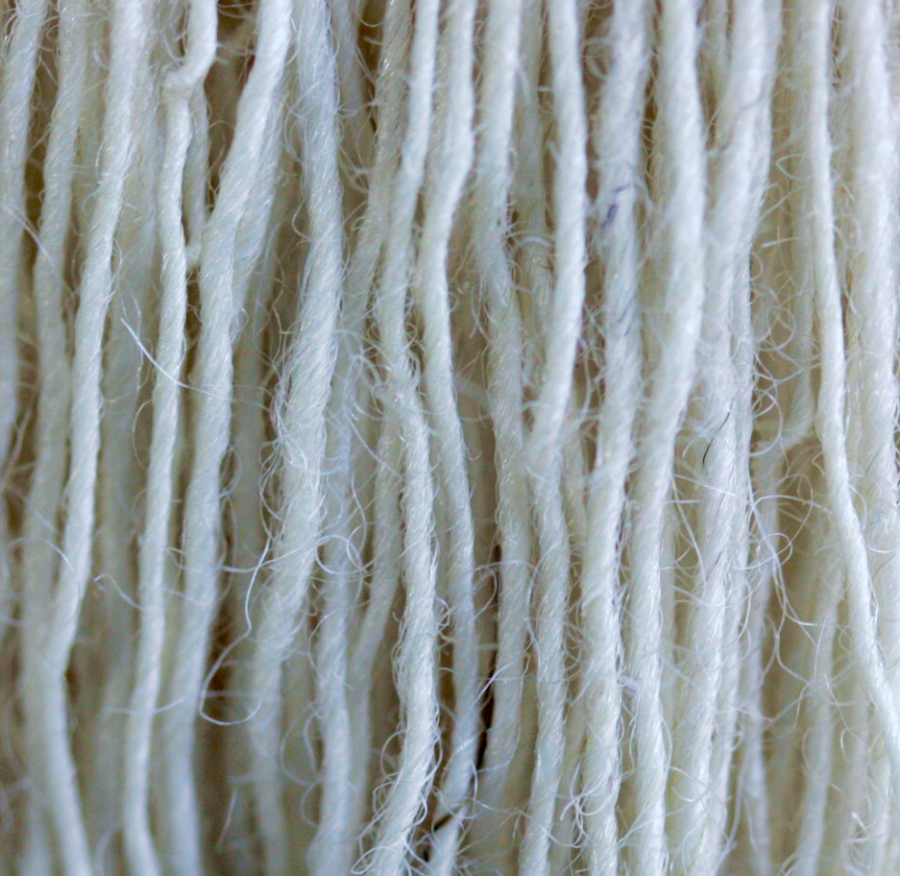 30° spinning angle
30° spinning angle
[caption id="attachment_2720" align="aligncenter" width="204"]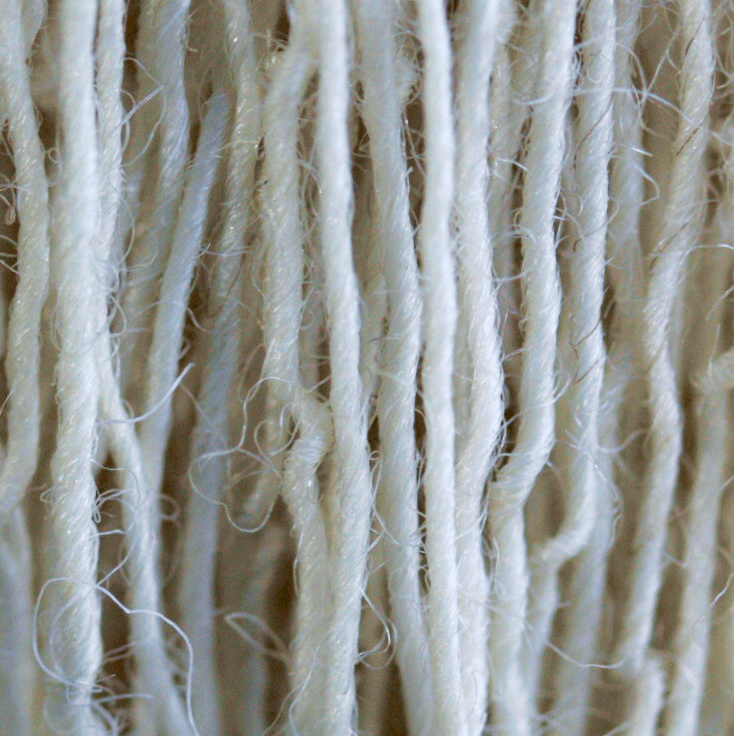 45° spinning angle
45° spinning angle
However, they should be regular enough for our purposes - and next week, during the Forum, they will turn into small bits of fabric, and that fabric will be dyed, and then we will see the differences between the three fabrics. Plus whether the dye penetrates them all equally well, or whether there are differences!

Three skeins, each with 230+ metres of yarn. Each from the same wool (Eider wool, I love that stuff, it really spins up beautifully), each in the same thickness of 0.5 mm, give or take a smidgen (even the evenest handspinning is not completely even!) and each finished in the same way (placed into a bowl, boiling hot water poured on top, left for 10 minutes to soak, then stretched out, then hung to dry with 1418 g of weight tied to the bottom end of the skein).
The only difference is the amount of twist between these three. The skein on the left has a spinning angle of about 45°, the one in the middle about 30°, and the one on the right about 20° - give or take a smidgen...
As you can see in the close-ups, the angle does make quite a difference. You can also see that it is not all the same everywhere in the threads, even though I always try to spin really, really evenly and really, really neatly.
[caption id="attachment_2718" align="aligncenter" width="196"]
 20° spinning angle
20° spinning angle[caption id="attachment_2719" align="aligncenter" width="206"]
 30° spinning angle
30° spinning angle[caption id="attachment_2720" align="aligncenter" width="204"]
 45° spinning angle
45° spinning angleHowever, they should be regular enough for our purposes - and next week, during the Forum, they will turn into small bits of fabric, and that fabric will be dyed, and then we will see the differences between the three fabrics. Plus whether the dye penetrates them all equally well, or whether there are differences!




